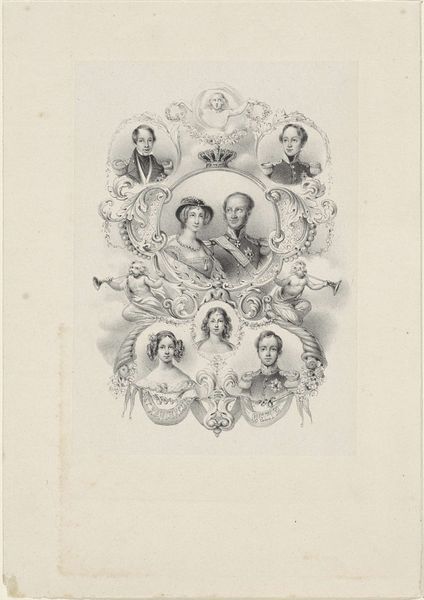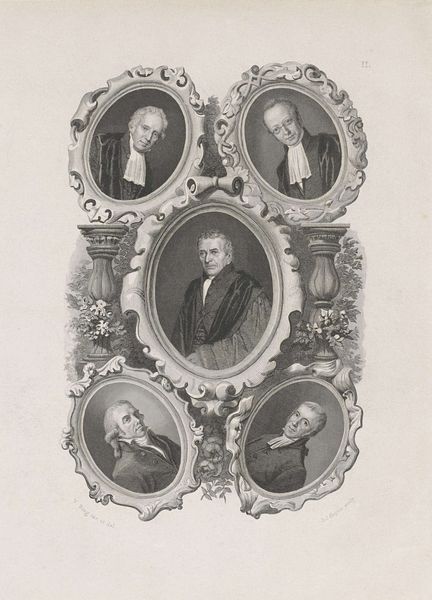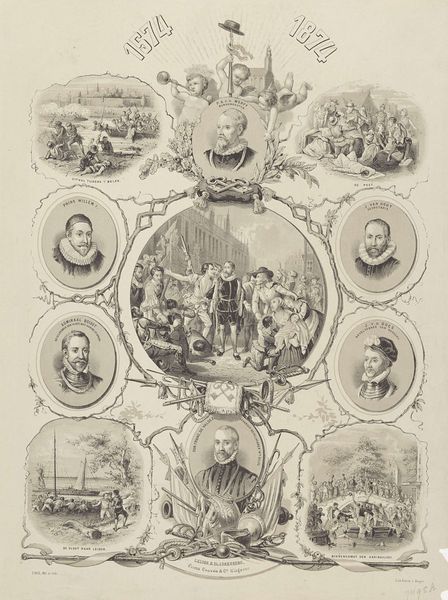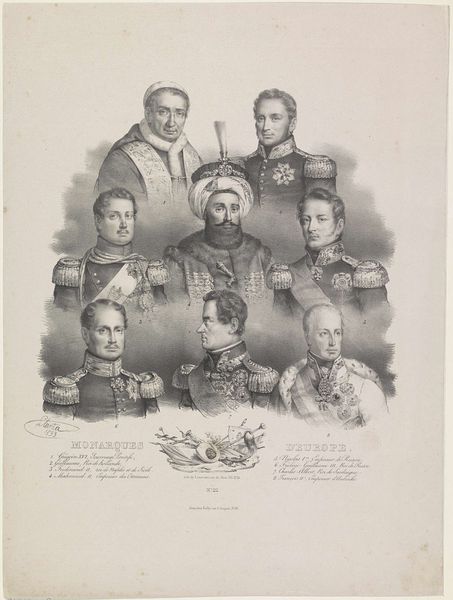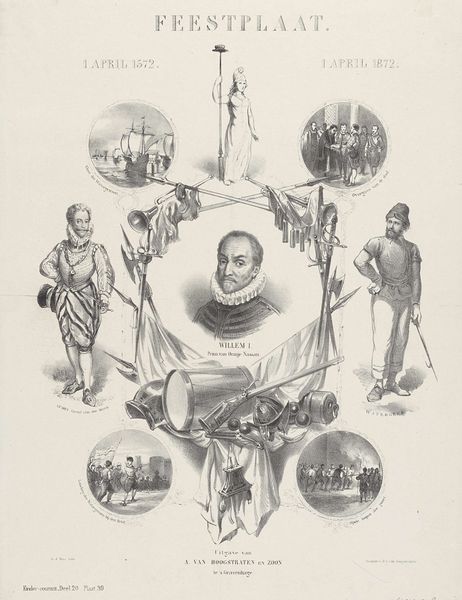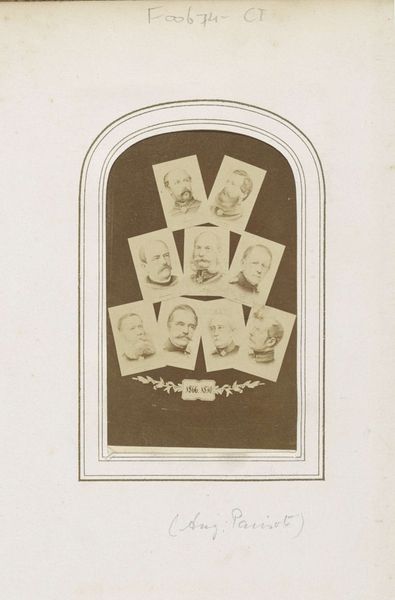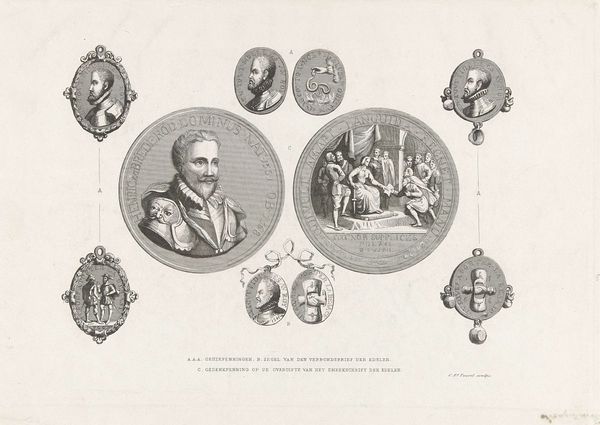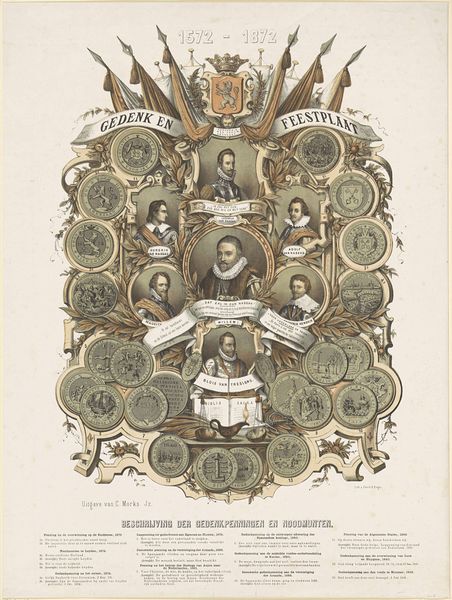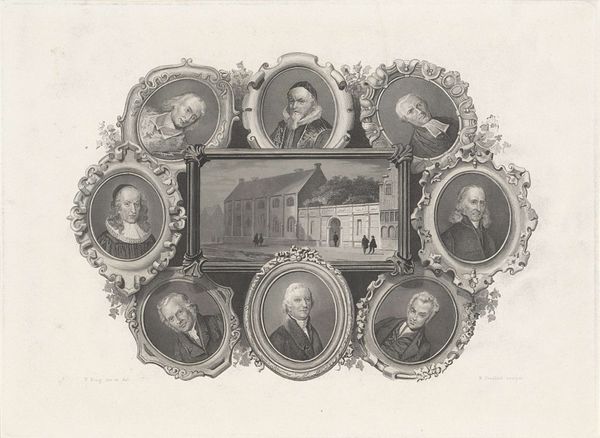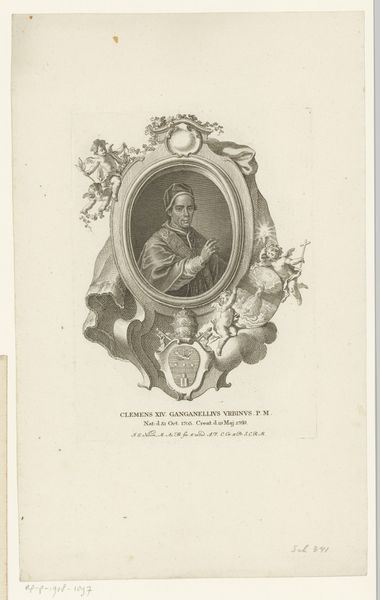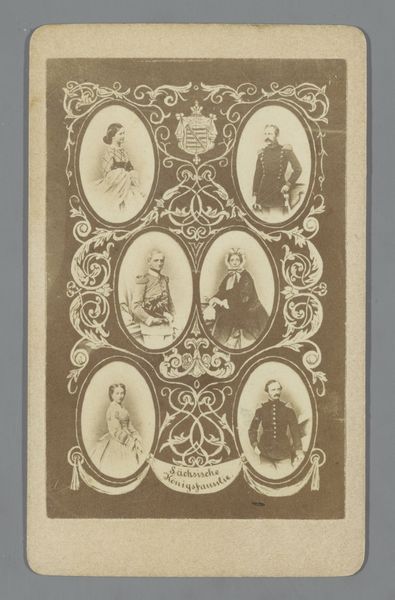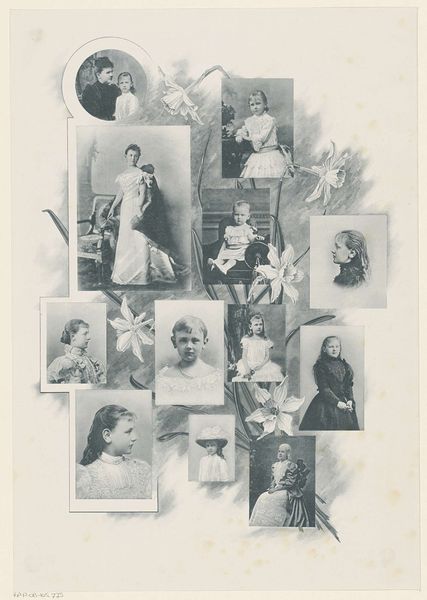
Zes portretten in medaillon: Filips van Marnix, heer van Sint-Aldegonde, Huibert Duifhuis, Willem I, prins van Oranje, Jean Taffin, Hadrianus Junius en Petrus Dathenus 1869
0:00
0:00
print, engraving
#
portrait
# print
#
group-portraits
#
engraving
#
realism
Dimensions: height 262 mm, width 186 mm
Copyright: Rijks Museum: Open Domain
Curator: What a collection of stern faces! Looking at this print, I'm immediately struck by its formality. There's something about the rigidity of the compositions and those elaborate ruffs that gives it such a serious tone. Editor: And rightly so, I’d argue! This engraving by Dirk Jurriaan Sluyter from 1869 showcases six significant figures: Filips van Marnix, Huibert Duifhuis, Willem I, Jean Taffin, Hadrianus Junius, and Petrus Dathenus. These were influential individuals in Dutch history, particularly during the Reformation and the Dutch Revolt. To grasp this artwork, it's important to understand their historical context and their contributions to religious and political thought. Curator: Absolutely, there's definitely a story here that stretches beyond just portraiture. What's fascinating is how the artist groups them together in these medallion frames, almost like a family tree, perched on volumes of antique tomes. Do you think it's a deliberate attempt to portray their intellectual lineage? Editor: Undoubtably. Consider their influence on the sociopolitical landscape and shifting religious ideologies of their era. Their positioning, encased within elaborate frames, is definitely a strategy used by Sluyter to monumentalize them and link them to this powerful history. Curator: It is rather telling. Despite being an engraving, which inherently limits the tonal range, Sluyter still manages to capture a sense of depth and texture in the fabrics and faces. The shading almost creates a sense of gravitas—these were thinkers and leaders shouldering a burden. Editor: The portraits, while individualized, do conform to a visual language of authority—beards, serious expressions, the aforementioned ruffs. To unpack this artwork fully, it's crucial to examine the visual rhetoric deployed, reflecting both the era it depicts and the moment of its creation in the 19th century, considering what and whom it chooses to valorize. Curator: A thought-provoking point. Thinking about this piece now, it really makes me appreciate the layered ways we memorialize our heroes. This piece becomes not only about its subjects but also how the 19th century chose to represent these significant historical figures, making us question what these carefully-selected frames signify for us today. Editor: Indeed. A reflection of power, influence, and the ongoing project of how we define our past. It all swirls together, creating new avenues to contextualize and continue to study its cultural impact.
Comments
No comments
Be the first to comment and join the conversation on the ultimate creative platform.
